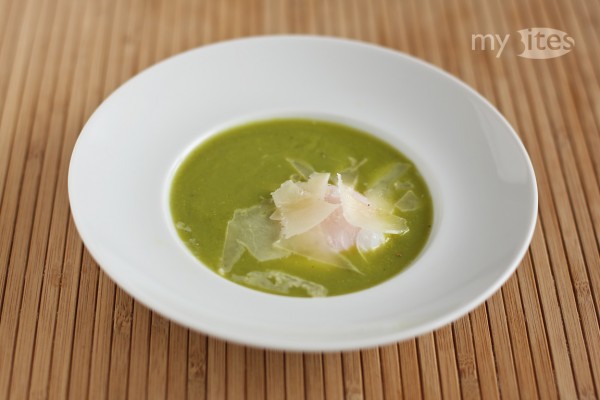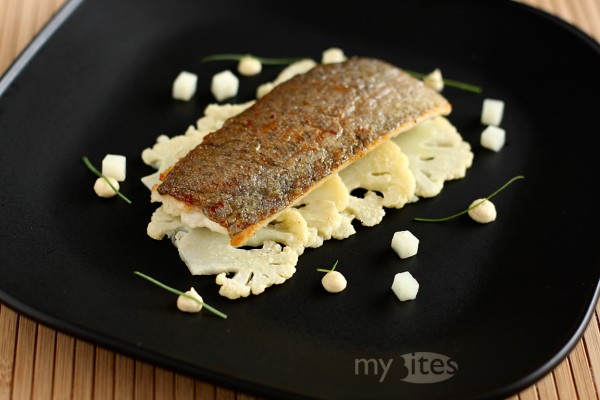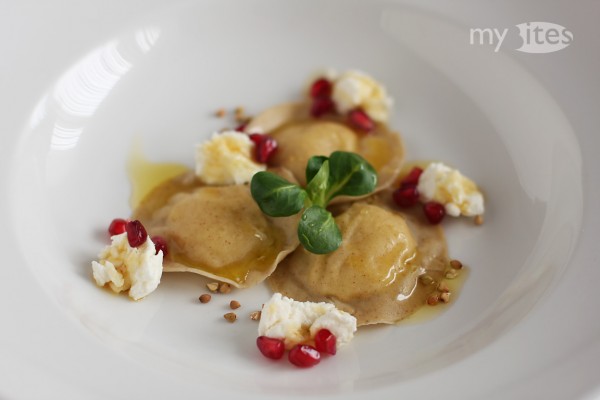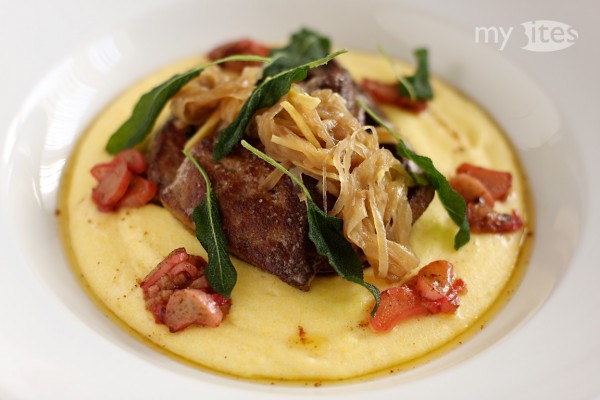About one year ago, when Phaidon released the revolutionary cookbook Noma by René Redzepi, they also prepared a few short videos for promotion purposes. These short videos show Redzepi foraging and cooking four of his dishes – which actually aren’t featured in the book itself. The videos and the book both try to transmit and deliver the path to the development of new dish and the main idea behind the restaurant Noma.
Category Archives: Recipes
Salmon and Kohlrabi
Baking in salt-crust is a technique usually applied to fish, meat, potatoes, beets and sometimes celery roots. In fact, a lot more vegetables can be covered in coarse sea salt and baked in the oven, where the salt-crust not only seasons the vegetable, but also keeps all the flavors inside. This time I experimented with salt-baked kohlrabi, which developed into a magnificent result.
Trout with Cauliflower and White Poppy Seed and Lemon Puree
Cauliflower is a vegetable that can be stored quite well, and therefore it is available throughout almost the whole year. Actually, the real season for cauliflower – at least in Europe – is about right now. During spring and summer fresh cauliflower can be sourced from local farmers in white, green, orange or purple colors. Usually, cauliflower is picked into florets and cooked or steamed tender, or it is sometimes prepared as a creamy soup. In this recipe I cooked the cauliflower slightly different than usual and served it with a crispy roasted trout fillet.
Buckwheat and Celery Root Ravioli with Goat Cheese
Buckwheat is a very versatile ingredient. It can be cooked in water or stock, sprinkled on top of small buns and baked, or used as buckwheat flour for really flavorful pasta. To enhance the mild flavor of buckwheat, it should always be paired with smooth and light accompaniments. In the simple and light dish below I filled the buckwheat ravioli with a creamy celery root puree, which really allowed the nutty flavors of buckwheat to get into the foreground.
Calf’s Liver with Ginger-Onion Marmalade
By now the local markets are stacked with a large variety of young and fresh vegetables, such as asparagus, radishes, carrots or rhubarb. The latter is categorized often as fruit, although it’s only the stalk of a plant. Probably it’s considered as a fruit, because it’s mainly consumed sweetened by sugar or syrups. Savory interpretations of rhubarb are rare, which is unfortunate, because the tart aroma of rhubarb adds freshness to a plate and replaces vinegars perfectly in spring or summer dishes. In this dish below I used rhubarb as a refreshing sour element.
Coconut Trout Confit with Beetroot Fondant
It’s almost 4 years now that I filleted a whole fish for the first time in my life. Since then I stopped counting the number of fish I’ve filleted and really gained routine in getting clean and beautiful cuts as result. Nowadays I prefer to buy whole fish at the local market, because this way I can use the bones, head, tail and fins as well to cook a flavorful fish stock, which really enhances sauces, risottos and soups. I prefer to buy local and traditional fish such as trout, char or carp. Sea fish are no options for me, because I don’t have any reliable source for buying fresh seafood, and my hometown Erlangen is simply too far away from the sea.
Regarding the connection between seafood consumption and the distance to the sea, I had a surprising experience a few years ago in Italy, which I like to bring up every time I’m asked about seafood. I was lucky to get a publication accepted at a major conference in computer science, which was held in the beautiful city of Florence. Of course, I used the lunch breaks and the evenings to explore the local restaurant scene. I was even more fortunate having a receptionist at my hotel who was actually a native Florentine citizen. As almost everybody in Italy, he loved to eat, and especially to eat well. So from the first day on I consulted him which restaurant he recommends me to visit. I wasn’t a regular tourist, I really wanted to get to know the real local cuisine. He always told me only the next location I should go to and based on my report the next day he recommended me the next place to visit. This tactic was quite comprehensible, because I could have been a usual tourist, who actually might have been afraid of tripe, wild boar or other local specialties. But he pretty soon learned, that I was after the real local cuisine.




